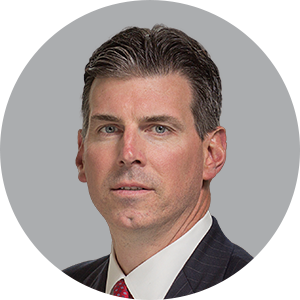Our dedicated and experienced infrastructure team
Dedicated professionals with extensive experience and specialized expertise.

Paul Ryan
30 years of industry experience
8 years at J.P. Morgan

Matt LeBlanc
31 years of industry experience
10 years at J.P. Morgan

Brian Goodwin
21 years of industry experience
all at J.P. Morgan
Why invest in private infrastructure?
Pursue potential benefits once available primarily to institutional investors.
Cash yield
Essential services with regulated and contracted revenues may deliver steady income through a market cycle.
Stable returns
Essential service providers often have little or no competition and less expected sensitivity to economic and market risks.
Diversification
Infrastructure has historically performed differently than stocks, bonds and other alternative assets.2
A growing need for private infrastructure investing
Build new assets
to accommodate the world’s growing population and the energy transition.
Upgrade existing assets
to modernize aging systems, improve safety and transition to sustainable energy.
How we invest in private infrastructure
Seeking regular cash flow and long-term returns across multiple sectors
Plan and guide your client conversations with our resources on infrastructure investing.
Explore other asset classes
Combine our alternative investments with traditional mutual funds and ETFs to build stronger, more diversified portfolio potential.
Get in touch
To learn more about infrastructure investments, consult your financial professional or call 1-800-480-4111.
1 Source: J.P. Morgan Asset Management; AUM (gross, ex-real estate) as of June 30, 2023.
2 Other alternatives include: Real Estate, Direct Lending, Venture Capital and Private Equity. Source: MSCI, Bloomberg, Burgiss, NCREIF, Cliffwater, HFRI, J.P. Morgan Asset Management. Private Equity and Venture Capital are time weighted returns from Burgiss. Global equities: MSCI AC World Index. Global Bonds: Bloomberg Global Aggregate Index. U.S. Core Real Estate: NCREIF Property Index – Open End Diversified Core Equity component. Europe Core Real Estate: MSCI Global Property Fund Index – Continental Europe. Asia Pacific (APAC) Core Real Estate: MSCI Global Property Fund Index – Asia-Pacific. Global infrastructure (Infra.): MSCI Global Quarterly Infrastructure Asset Index. U.S. Direct Lending: Cliffwater Direct Lending Index. All correlation coefficients are calculated based on quarterly total return data for the period 6/30/2008 – 12/31/2022, except correlations with Bitcoin which are calculated over the period 12/31/2010 – 12/31/2022. Returns are denominated in USD. Diversification does not guarantee investment returns and does not eliminate the risk of loss.
3 Source: McKinsey Global Institute, J.P. Morgan Asset Management. Data is based on availability as of May 31, 2023, using constant 2017 U.S. dollars.
There can be no assurance that the professionals currently employed by J.P. Morgan Asset Management (JPMAM) will continue to be employed by JPMAM or that the past performance or success of any such professional serves as an indicator of their future performance or success.
